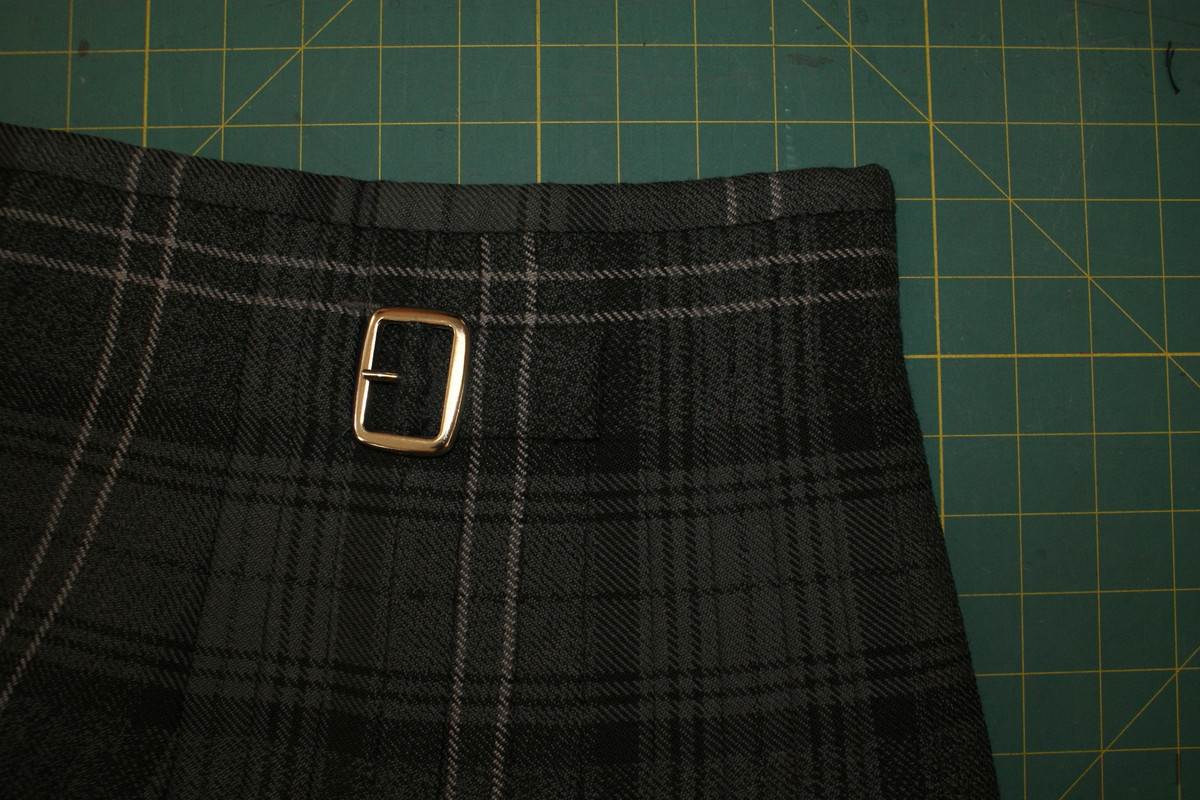Let me see if I can clear up a few things.
It is not the outer fabric that makes a kilt.
It is not the measurements or where the waist is worn that makes a kilt.
It is the construction that makes a kilt.
Some, but not all, ladies Tartan pleated skirts buckle with the opening on the left side.
Some, but not all, ladies Tartan pleated skirts are made from lighter weight fabrics.
But where the largest difference lies, is in in the construction. A ladies Tartan pleated skirt is made using dressmaker techniques and is made the way a skirt is made.
This issue of waist height is one of the most misunderstood things about the Iconic kilts.
At the time when the Iconic kilt was designed all men's trousers were worn at the anatomical waist.

Today very few men have ever worn anything with a waist this high. Many do not even realize that the Iconic kilts were designed this way and that you cannot just wear it anyway you want and still have the garment look the way it was designed to be worn.

The Iconic kilt is one of the very few garments where the wearer must conform to the design of the garment. The garment does not conform to the wearers whims.
To understand the anatomical waist we do not reference the navel or belly button. The belly button is in soft tissue and can change position with weight.
So we reference the bones which do not change.
Put a finger just under the ribs at the side and bend in, towards your finger. You should feel a hollow. This is the anatomical waist and is where your spine, the bones, bend.
If you put a strap simulating the waist of a kilt at the anatomical waist, in the back the strap is at kidney level. In front it is three to four finger widths below the bottom of the breastbone.
This is why an Iconic kilt is made with a rise which flares outward above the top strap. The strap cinches into the anatomical waist and the Rise flares out to fit over the short ribs at the side and back.

There are other construction elements which are recognized as "kilt". The length of the Fell Area is one. The Fell Area is that part of the kilt in the back that is sewn down and tapered. In an Iconic kilt made In Accordance With "The Art of Kiltmaking" The length of the Fell Area is 1/3 of the length of the kilt from the bottom to the center of the top strap. If worn the way it was designed, the bottom of this Fell Area should be right about the widest part of the hips and buttocks. If the bottom of the Fell Area is too high the pleats will tend to splay outward.

If a kilt is made to the measurements of the wearer the waist will be the circumference at the anatomical waist and the hips will be the circumference of the widest part of the hips and butt.
But - And this is a big one. When measuring for the hip circumference you must allow that the front aprons will fall straight down from the wearers belly.
You do not pull the tape measure in, below the belly. In your example I would automatically assume from the 40 inch waist that this man has a bit of a belly. So it would not be uncommon for the difference between waist and hips to be 8 inches.
Notice in this photo that the aprons fall straight down in the front and all the shaping of the kilt is in the rear Fell Area. It may not look like it but the difference between the waist and the hips of this kilt is 8 inches.

And if the waist is worn too low, the bottom of the Fell Area becomes lower and falls below the crest of the hips and butt causing the "Shower Curtain" folds you so often see due to the larger hip circumference.

Notice in the photo above that some of the stitching as popped from the stress of sitting on the Fell Area. Also the lower hip strap is fastened too tight pulling and distorting the fabric and stitching. Wearing a kilt lower than it was designed to be worn will also cause the bottom or Selvedge edge to fall below the top of the knee cap. You can see this at almost every Highland Games. With a kilt you really want to see some knee and leg between the top of the hose and the bottom of the kilt.


























Bookmarks